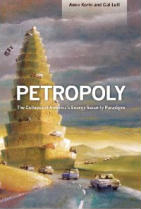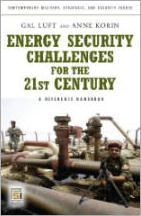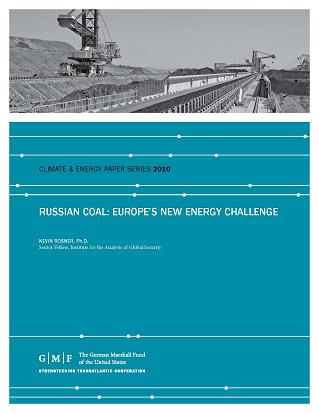The US is on the road to squander one of the biggest economic opportunities in its recent history. Since the beginning of the shale gas revolution in 2005 the American public has been primarily engaged in debates about the conditions under which hydraulic fracturing can take place and how much of the gas should be allocated for export. These questions are gradually being settled as more information on pros and cons of each option is gathered. But one important market for natural gas has been largely neglected - transportation.
In the absence of a serious public debate and readily available alternative domestic markets it is only natural that most of the cheap gas finds its way to the electricity sector, causing widespread displacement of coal fired generation. Coal’s share of total electricity generation declined from 51% ten years ago to 40% today and this percentage will continue to fall as the Obama administration persists in its ban on new coal fired power plants. The shift from coal to gas has brought a 10% decline in US greenhouse gas emissions from power plants since 2010, negating the political pressure for costly carbon cap-and-trade schemes. The shale gas industry has also created numerous jobs, stimulated economic growth and reduced consumer costs of natural gas derived products. But all these benefits pale in comparison to what could be achieved should the gas be replacing oil instead of coal.
Comparing the cost per energy source on a heat content basis reveals the degree of the missed economic opportunity of our current utilization of shale gas. The spot price of one million British thermal units (mmbtu) derived from natural gas is about $4.30. The price of US coal is more or less the same. At current oil prices the price of 1 mmbtu derived from oil is roughly $17. This means that from a pure economic standpoint the arbitrage opportunity of replacing coal with natural gas is zero while that of replacing oil with natural gas is $12.7 per mmbtu. Put it differently, at current oil and gas prices the 3.5 trillion cubic feet of gas that the Energy Information Administration assumes the US will be exporting annually as LNG starting next decade is worth $15 billion. If this amount of gas stayed in the US and were used to power cars and trucks it would have displaced, depending on the technology, between 3 and 4 million barrels of oil a day, eliminating oil imports at the cost of $100-$150 billion a year. Instead, the US will be exporting this $15 billion worth of energy only to import an equivalent amount of energy at up to ten times the cost.
The reason for this economic malpractice is that our transportation sector is wedded to oil. Natural gas landed in the power sector not necessarily because electricity is the most economic use of the commodity but because our grid and electric appliances are indifferent about the source of energy that goes into making the electrons they use. For a light bulb or a coffee machine, electrons made from coal, gas, nuclear or solar are all the same. Cars are a different story. They do care what source of energy goes into their tank because for the most part they are warrantied to run on nothing but petroleum fuels. This means that no matter how cheap and plentiful natural gas becomes its pathway to our vehicles is blocked.
While there are some efforts to increase the use of natural gas as an automotive fuel they are limited to heavy duty trucks and buses and therefore will not get us close to capturing the full economic opportunity offered by the shale gas revolution. According to the Energy Information Administration at current trends the increased use of compressed natural gas (CNG) and LNG in vehicles will offset only 3% of petroleum consumption in the transportation sector in 2040. This is a profoundly disappointing figure which means that most households will not be able to take advantage of America’s natural gas when it comes to their fuel expenditures. In order for the natural gas bonanza to benefit every American it must penetrate the light duty sector, where most of our fuel is used. One way of doing so is to reduce the cost of aftermarket conversions to CNG by streamlining the onerous regulatory requirements consumers are currently facing.
Another is to turn the gas into gasoline and diesel in a process called gas-to-liquids (GTL). But for a GTL plant to make money, a barrel of oil has to cost about 16 times more than 1 mmbtu of natural gas. This ratio is too high to expect over the long run which is why Royal Dutch Shell recently abandoned its $20 billion GTL project in Louisiana. A more fiscally prudent way of using natural gas in transportation is to open light duty vehicles to run on a liquid fuel called methanol. This high octane alcohol can be blended into gasoline similarly to the way ethanol is blended. Properly adjusted flexible fuel vehicles, which cost automakers an extra $100 or so to manufacture as compared to gasoline only cars, allow drivers to choose whether to run on methanol, gasoline, or some combination of the fuels.
To be sure, in the coming years there will be times when natural gas prices inch up while oil prices decline, but it is highly unlikely that oil will ever become cheaper than natural gas on a caloric basis. The arbitrage opportunity in shifting from oil to gas in the transportation sector is too appealing to let go. But as long as our cars are locked to gasoline and blocked to its competitors, America's natural gas will go to fuel power plants in Asia and Europe instead of cars at home – and while the sellers of the gas may be agnostic as to where it ends up, for the US at large this will be the least optimal of its uses.
Gal Luft is co-director of the Institute for the Analysis of Global Security (IAGS) and Senior Adviser to the United States Energy Security Council (USESC).














